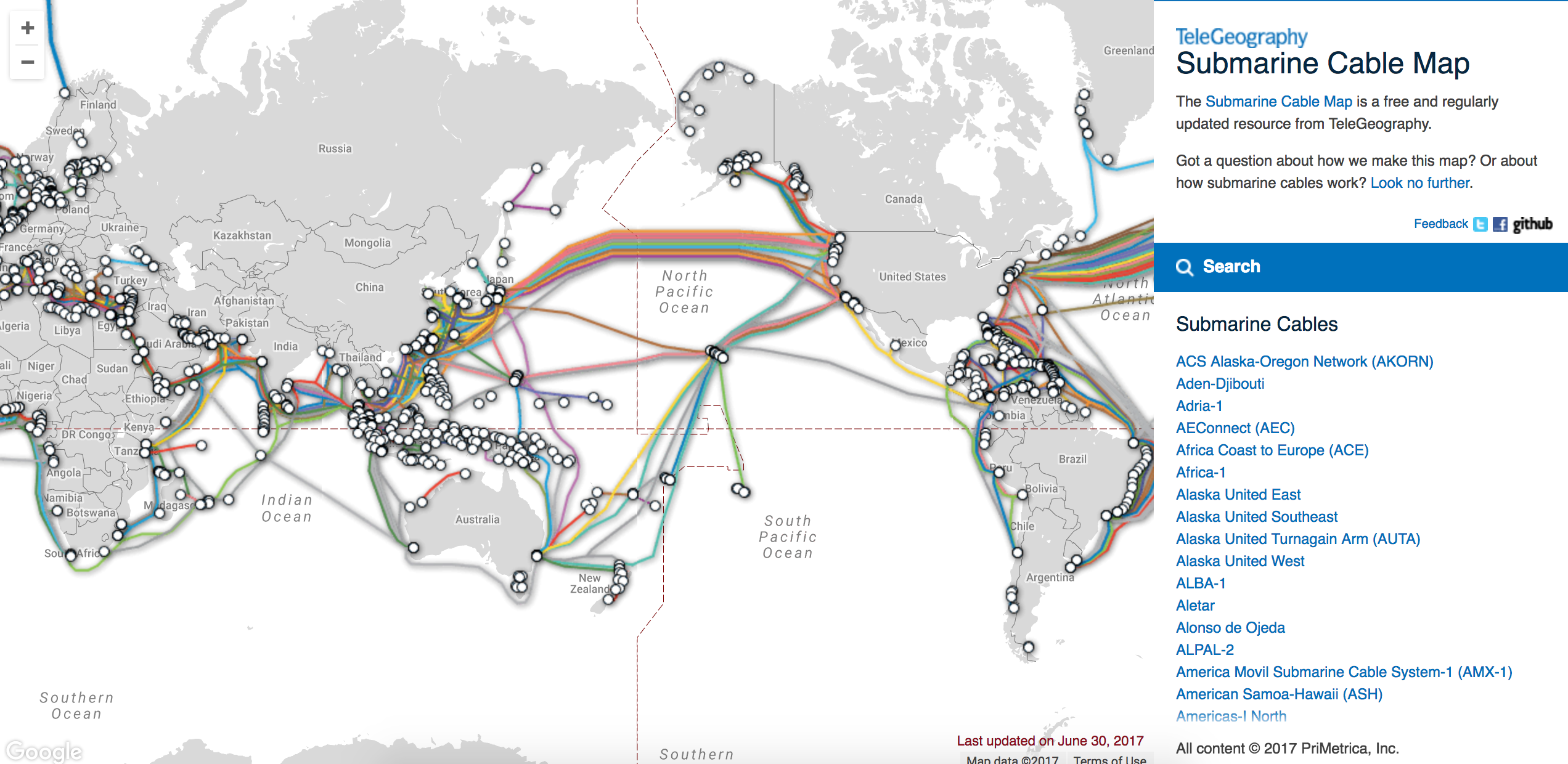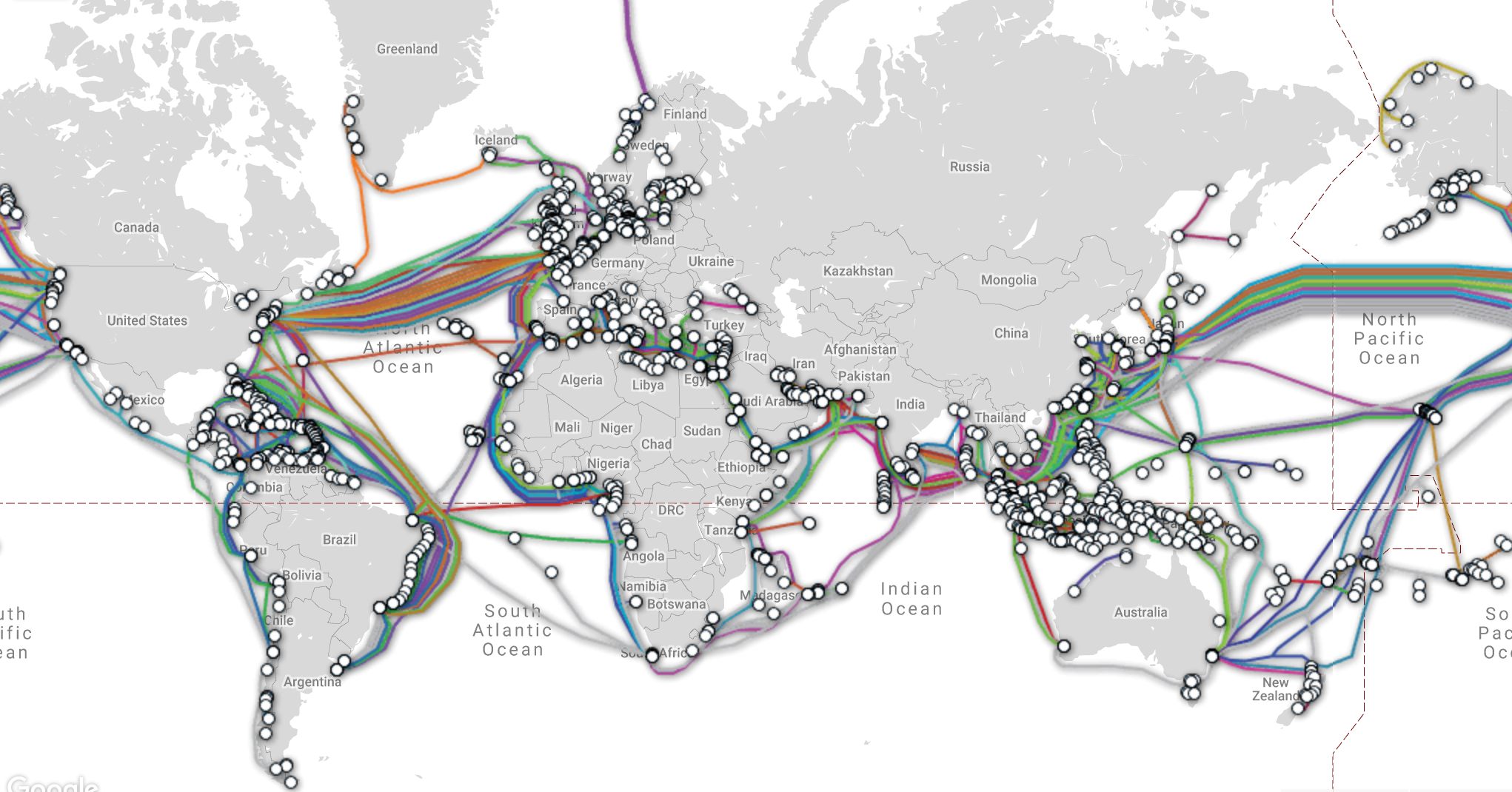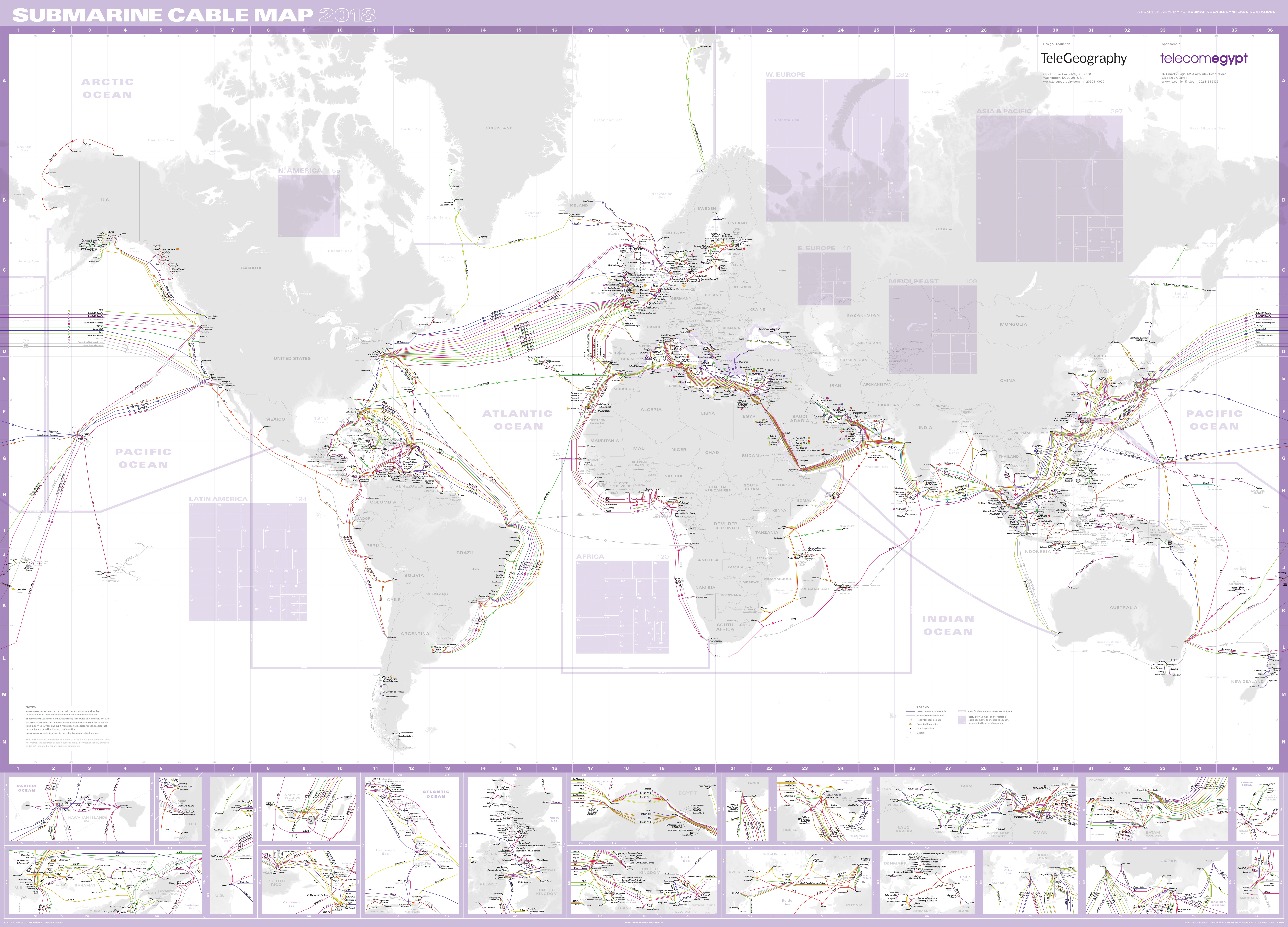

#Submarine cable map driver
Perhaps unsurprisingly, Amazon’s biggest revenue driver is e-commerce. Google dominates the search market-about 90% of all internet searches are done on Google platforms.

This makes sense considering Google and YouTube get a lot of eyeballs. In Q2 2022, about 72% of Alphabet’s revenue came from search advertising. So how does each big tech firm make money? Let’s explore using data from each company’s June 2022 quarterly income statements.
#Submarine cable map series
This is apparent when you look into their various revenue streams, and this series of graphics by Truman Du provides a revenue breakdown of Alphabet, Amazon, Apple, and Microsoft. But while there is certainly competition between the world’s tech giants, it’s a lot less drastic than you might imagine. After all, they constitute the world’s largest companies by market capitalization.Īnd because of this, it’s easy to assume they’re in direct competition with each other, fiercely battling for a bigger piece of the “ Big Tech” pie. In the media and public discourse, companies like Alphabet, Apple, and Microsoft are often lumped together into the same “Big Tech” category. Cloud computing is the big demand driver of this new private cable boom.Īs more millions more people around the world adopt cloud computing, we’ll be certain to see even more cables criss-crossing the world’s oceans in the near future. Content providers such as Google and Microsoft are increasingly major investors in new cable. Traditionally, private companies or consortiums formed by telecom carriers owned cables, but that model is changing. Remote Pacific islands, and even obscure ocean towns in the Arctic Circle have such connections. The network is clustered around information economy hotspots like Singapore and New York, but cables connect to just about anywhere. Today, there are over 420 submarine cables in service, stretching over 700,000 miles (1.1 million km) around the world.

(One common misconception is that most of our information is transmitted through satellites, but fiber optic cables actually form the backbone of the internet, transmitting about 99% of all data.) The level of speed has only increased with time – and now cables can transmit 160 terabits per second. The first transatlantic telephone cables went into service in 1956, and 32 years later, the first fiber optic cable connected Europe and America.įiber optic technology made transmitting massive quantities of information fast and cost-effective. By the year 1900, there were already over 130,000 miles (200,000 km) of cable running along the ocean floor! Beyond the Telegram “Instant” communication was a huge commercial hit, and it prompted a cable laying boom. Though communication was expensive and limited to only a few words per hour at best, the speed of communication was unparalleled at the time. The first transcontinental cable – laid in 1858 – ran from Ireland to Newfoundland, and made telegraph communication possible between England and Canada. The map above, by Ben Pollock, is a comprehensive look at the world’s cable network, as well as some of the impressive information on bandwidth and maintenance jurisdictions. But while they lack the flashiness of satellites, it’s actually the world’s vast network of fiber optic cables that does most of the heavy lifting in keeping our information flowing from place to place.
#Submarine cable map full
View the above visualization at full resolution for the best experience. Map: The World’s Network of Submarine Cables


 0 kommentar(er)
0 kommentar(er)
